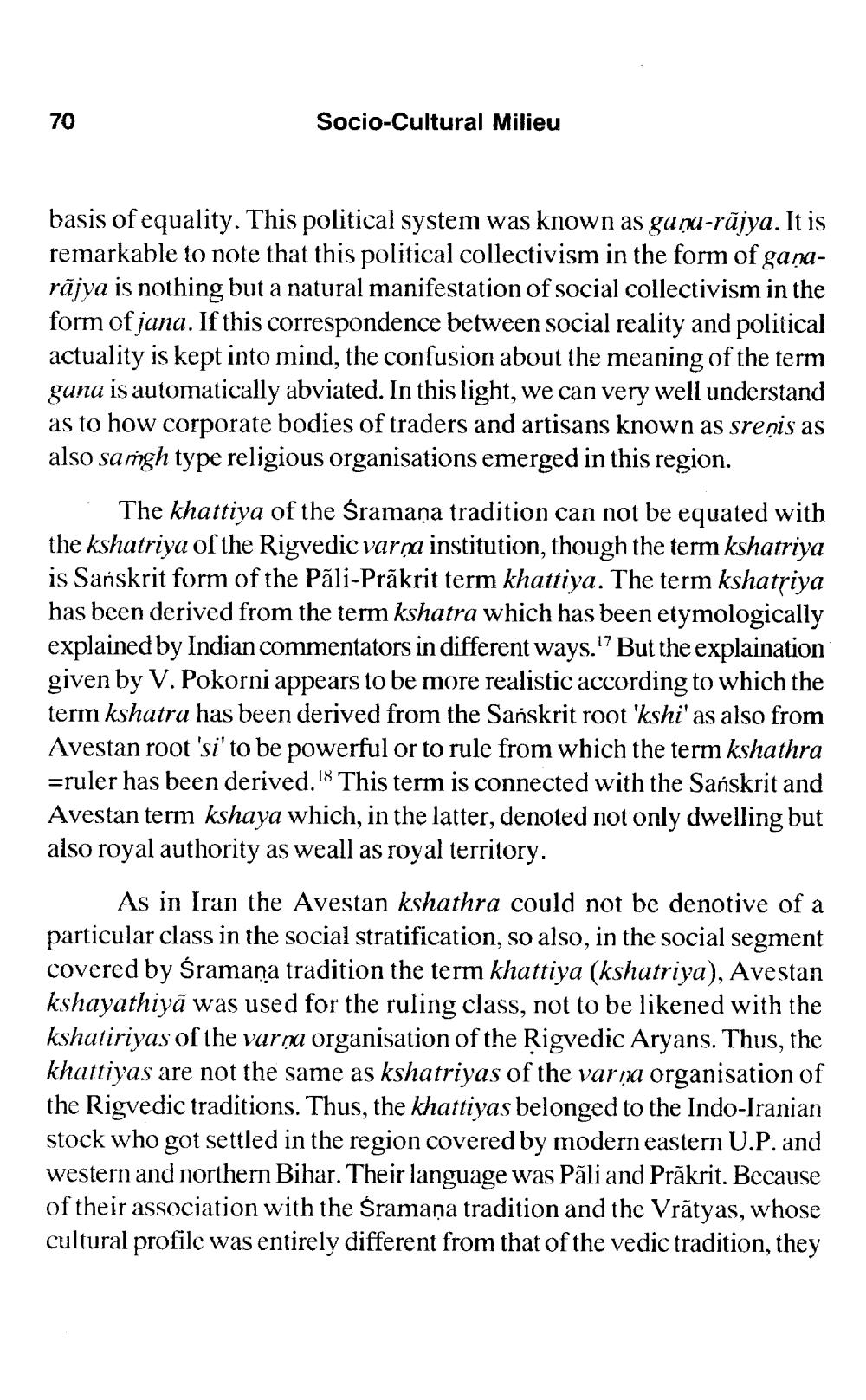________________
70
Socio-Cultural Milieu
basis of equality. This political system was known as gama-rājya. It is remarkable to note that this political collectivism in the form of ganarăjya is nothing but a natural manifestation of social collectivism in the form of jana. If this correspondence between social reality and political actuality is kept into mind, the confusion about the meaning of the term gana is automatically abviated. In this light, we can very well understand as to how corporate bodies of traders and artisans known as sreņis as also saṁgh type religious organisations emerged in this region.
The khattiya of the Śramaņa tradition can not be equated with the kshatriya of the Rigvedic varņa institution, though the term kshatriya is Sanskrit form of the Pãli-Prākrit term khattiya. The term kshatriya has been derived from the term kshatra which has been etymologically explained by Indian commentators in different ways. But the explaination given by V. Pokorni appears to be more realistic according to which the term kshatra has been derived from the Sanskrit root 'kshi' as also from Avestan root 'si' to be powerful or to rule from which the term kshathra =ruler has been derived.18 This term is connected with the Sanskrit and Avestan term kshaya which, in the latter, denoted not only dwelling but also royal authority as weall as royal territory.
As in Iran the Avestan kshathra could not be denotive of a particular class in the social stratification, so also, in the social segment covered by Śramana tradition the term khattiya (kshatriya), Avestan kshayathiyā was used for the ruling class, not to be likened with the kshatiriyas of the varņa organisation of the Rigvedic Aryans. Thus, the khattiyas are not the same as kshatriyas of the varma organisation of the Rigvedic traditions. Thus, the khattiyas belonged to the Indo-Iranian stock who got settled in the region covered by modern eastern U.P. and western and northern Bihar. Their language was Pāli and Prākrit. Because of their association with the Śramaņa tradition and the Vrátyas, whose cultural profile was entirely different from that of the vedic tradition, they




